Weather Radar and Bird Migration
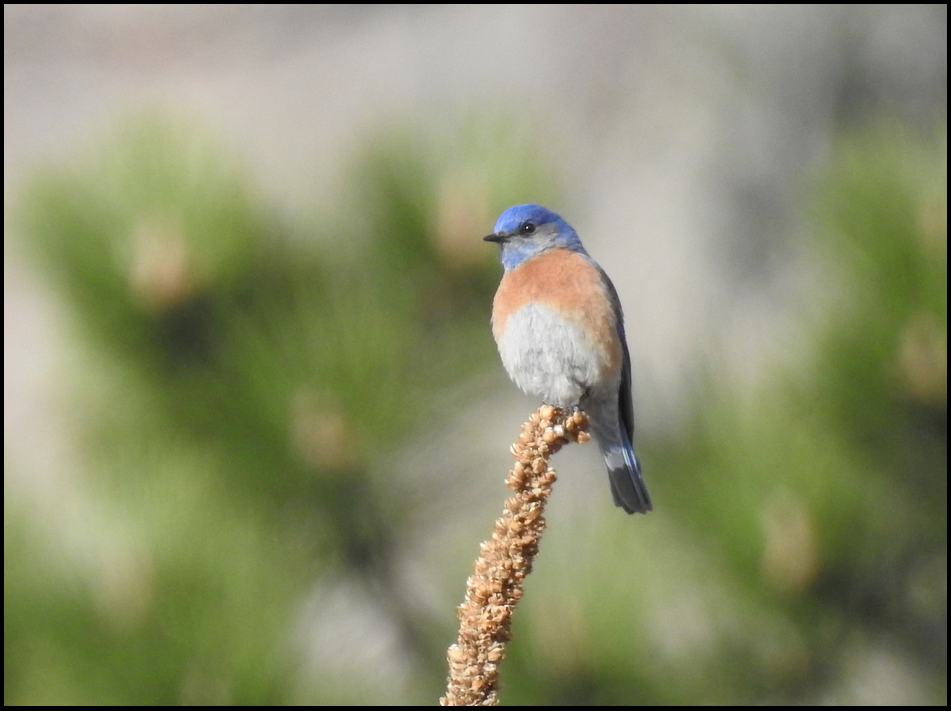
Photo by Jane Baryames.
How Does It Work?
It turns out that our nation-wide network of weather radar stations is perfect for gathering information about nocturnal bird migration. In total darkness, the radar can detect the total number of birds in the air, the birds’ speed, altitude, and direction of flight. As a result, we humans have learned much more about nocturnal bird migration since the radar network was upgraded in 2013.
In 2013, the US National Weather Service (and other government agencies) improved our nation-wide network of weather radar stations. The network now includes 160 Doppler weather radar stations, covering nearly all of the lower-48 states of the United States. “Next Generation Weather Radar” (NEXRAD) images are familiar to every American, but what most of us haven’t seen are the images with migrating birds.

What does this look like?
Here’s what a nation-wide radar image looks like on a bird migration night (images courtesy of aeroecolab.com):
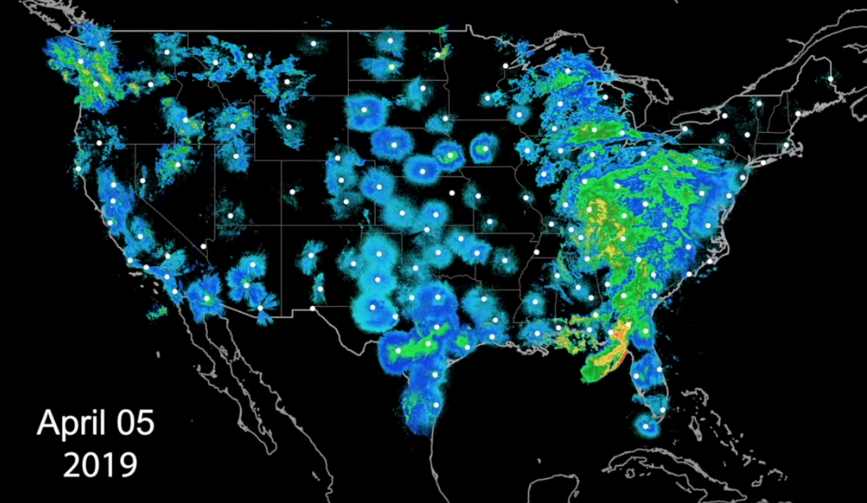
Weather forecasters want to look mainly at precipitation, and they filter out the birds:
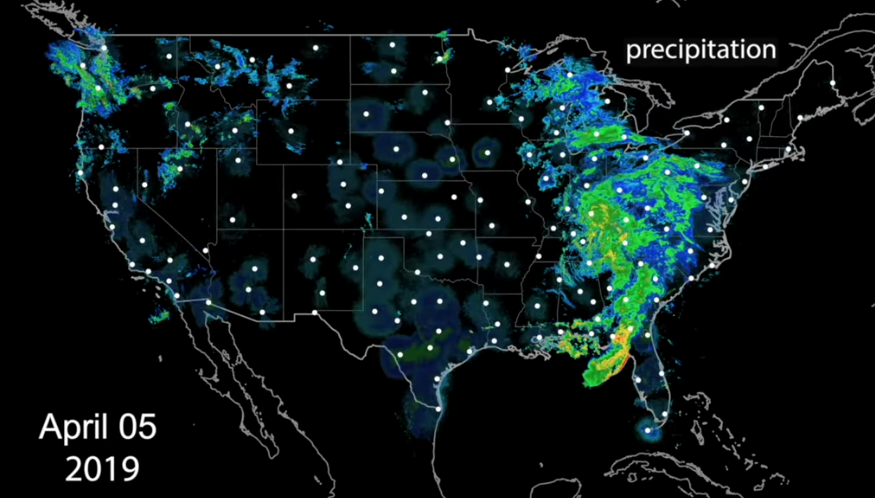
Bird migration researchers filter out the weather to focus on the birds:
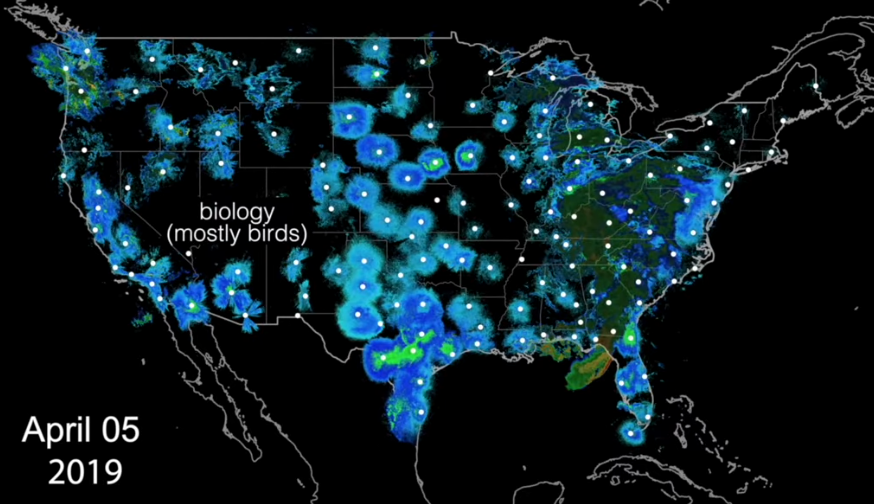
Here’s a summary video showing each night during the month of April 2019:
The BirdCast Migration Dashboard has radar-based data from every night in the past, and has live bird migration radar data each night.

On this particular night in Colorado, there was an unusually-high number of birds migrating, and they were flying higher and faster than normal (almost 2000 feet above ground, and over 40 MPH on average!).

When using the BirdCast Migration Dashboard, pick the location and night at the top of the page.
Bird Migration Forecasts
These radar data, along with weather forecasts, are used to create bird migration forecasts. These forecasts predict the bird migration levels in North America for the next three nights, and alert us when there are particularly heavy migration traffic predicted. The same forecasts appear on two different partner websites: aeroecolab.com and birdcast.info.
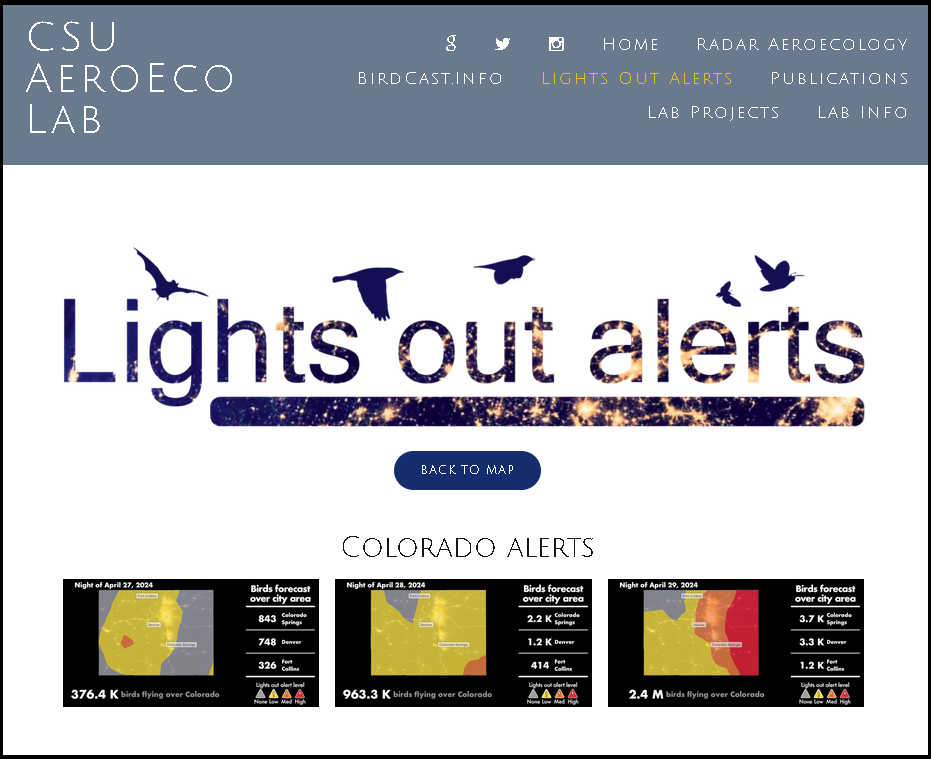

Learn More
NEXRAD Radar Network – https://www.ncei.noaa.gov/products/radar/next-generation-weather-radar
About Radar-based AeroEcology – https://aeroecolab.com/radar-aeroecology
The BirdCast Migration Dashboard – https://dashboard.birdcast.info/region/US-CO
State-based Lights Out Alerts – https://aeroecolab.com/colorado
National Bird Migration Forecast – https://birdcast.info/
How to Limit Light Pollution for the benefit of Migratory Birds – https://lights-out-colorado.darkskycolorado.org/


